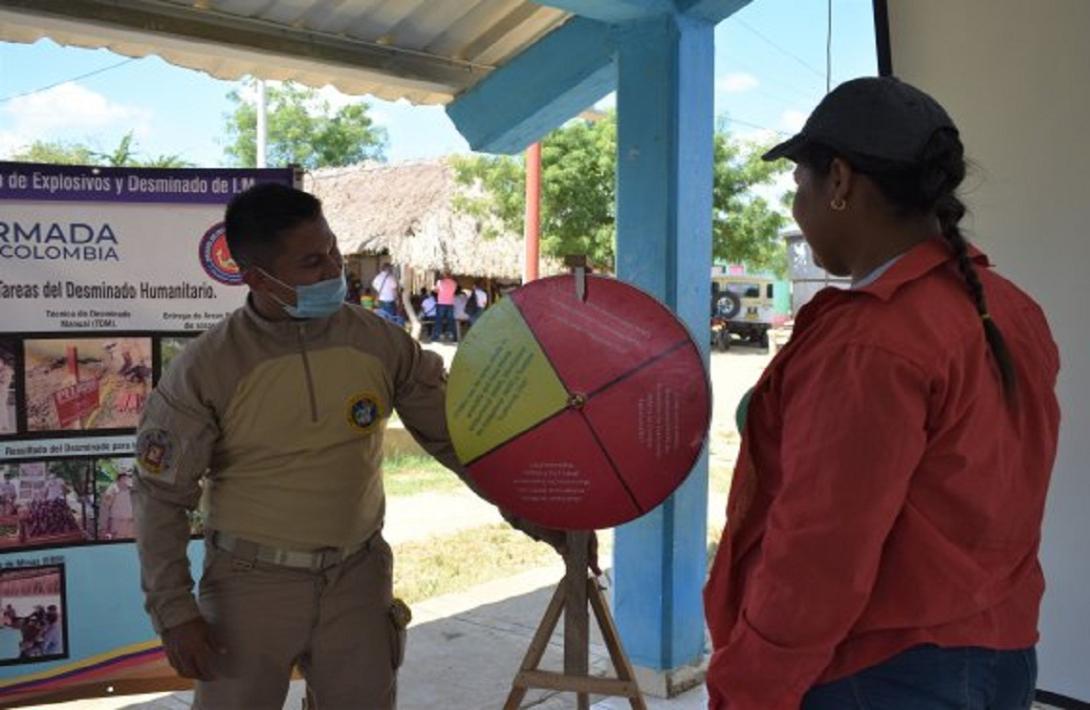This year, the Colombian Navy's Humanitarian Demining Company has trained more than two thousand people in 18 workshops in the departments of Bolívar and Sucre.
With the aim of preventing accidents with anti-personnel mines, unexploded ordnance and explosive traps in the municipalities of the departments of Bolívar and Sucre, where they conduct work of clearance of anti-personnel mines, the Navy of Colombia has undertaken a pedagogical process so that the inhabitants are provided with the educational tools necessary for the comprehensive development of all communities.
On this occasion, a new educational activity was carried out in the municipality of Capaca, rural area of the municipality of Zambrano, Bolívar, in which more than 50 people participated, including community leaders, young people and mothers head of household.
During the meeting a group of young people of the Renacer del Campo Association of the municipality of Zambrano, Bolívar, shared a sample of their dairy products, an innovation and entrepreneurship project that consists of the transformation of the cassava grown in their fields, into dairy products for human and animal consumption, such as yogurts, milkshakes, oats and desserts.
An important project that was made possible thanks to the demining work, because when the municipality of Zambrano was declared a territory free of antipersonnel mines, the locals and peasants returned to the field to confidently cultivate their agricultural products and thus reactivate the local economy.
This interactive workshop had the support of the Government of Bolívar and the Municipal Mayor's Office, who ratified the importance of holding this type of meeting that leads communities to identify in their territories this type of devices and report to the corresponding authorities.
Finally, it is important to note that so far in 2021, the Humanitarian Demining Company has conducted 11 Mine Risk Education workshops in the department of Sucre, while in Bolívar 7 workshops have been held, training more than two thousand people.
Source: press-Colombian Navy





